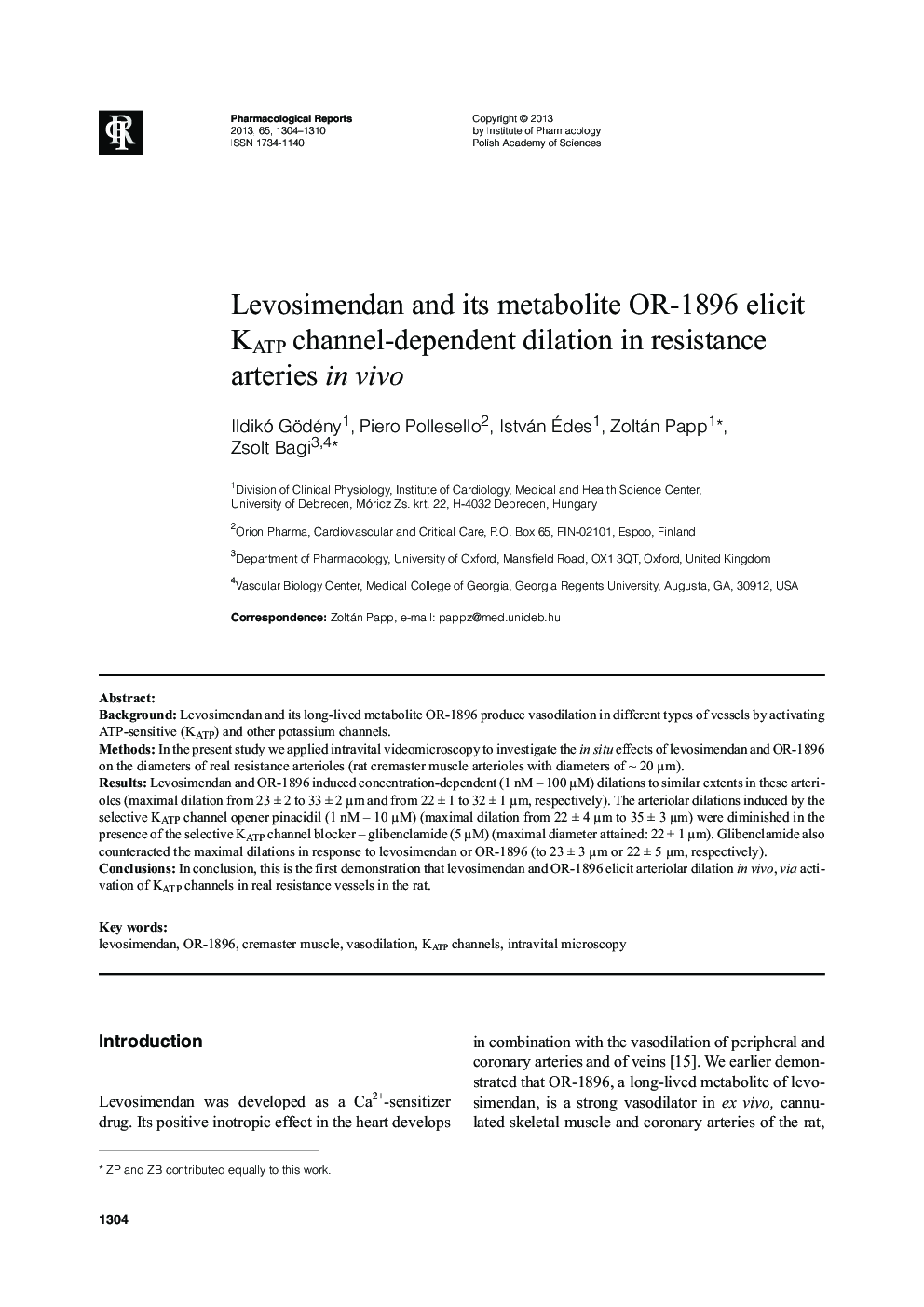| Article ID | Journal | Published Year | Pages | File Type |
|---|---|---|---|---|
| 2010760 | Pharmacological Reports | 2013 | 7 Pages |
BackgroundLevosimendan and its long-lived metabolite OR-1896 produce vasodilation in different types of vessels by activating ATP-sensitive (KATP) and other potassium channels.MethodsIn the present study we applied intravital videomicroscopy to investigate the in situ effects of levosimendan and OR-1896 on the diameters of real resistance arterioles (rat cremaster muscle arterioles with diameters of ~ 20 μm).ResultsLevosimendan and OR-1896 induced concentration-dependent (1 nM – 100 μM) dilations to similar extents in these arterioles (maximal dilation from 23 ± 2 to 33 ± 2 μm and from 22 ± 1 to 32 ± 1 μm, respectively). The arteriolar dilations induced by the selective KATP channel opener pinacidil (1 nM – 10 μM) (maximal dilation from 22 ± 4 μm to 35 ± 3 μm) were diminished in the presence of the selective KATP channel blocker – glibenclamide (5 μM) (maximal diameter attained: 22 ± 1 μm). Glibenclamide also counteracted the maximal dilations in response to levosimendan or OR-1896 (to 23 ± 3 μm or 22 ± 5 μm, respectively).ConclusionsIn conclusion, this is the first demonstration that levosimendan and OR-1896 elicit arteriolar dilation in vivo, via activation of KATP channels in real resistance vessels in the rat.
